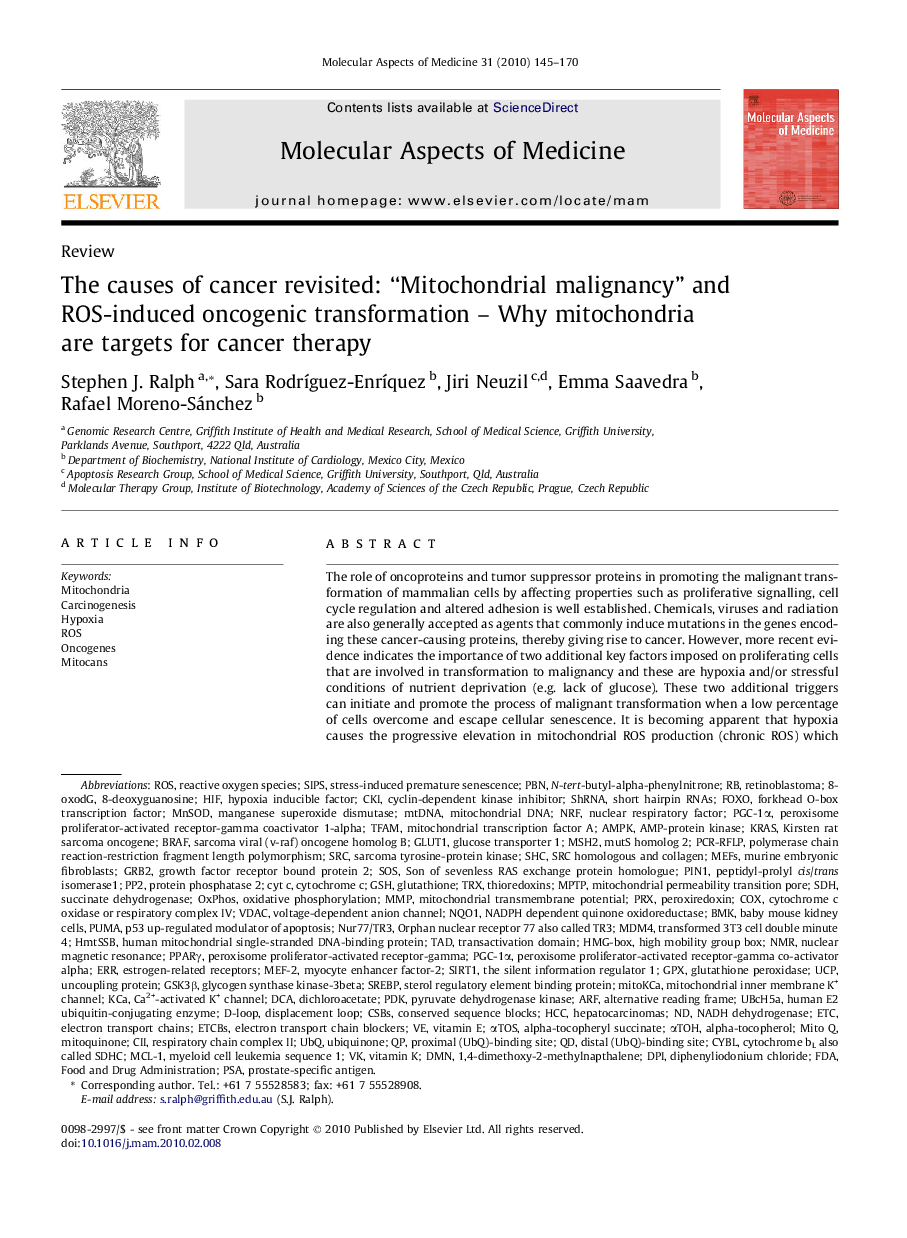| Article ID | Journal | Published Year | Pages | File Type |
|---|---|---|---|---|
| 1995820 | Molecular Aspects of Medicine | 2010 | 26 Pages |
The role of oncoproteins and tumor suppressor proteins in promoting the malignant transformation of mammalian cells by affecting properties such as proliferative signalling, cell cycle regulation and altered adhesion is well established. Chemicals, viruses and radiation are also generally accepted as agents that commonly induce mutations in the genes encoding these cancer-causing proteins, thereby giving rise to cancer. However, more recent evidence indicates the importance of two additional key factors imposed on proliferating cells that are involved in transformation to malignancy and these are hypoxia and/or stressful conditions of nutrient deprivation (e.g. lack of glucose). These two additional triggers can initiate and promote the process of malignant transformation when a low percentage of cells overcome and escape cellular senescence. It is becoming apparent that hypoxia causes the progressive elevation in mitochondrial ROS production (chronic ROS) which over time leads to stabilization of cells via increased HIF-2alpha expression, enabling cells to survive with sustained levels of elevated ROS. In cells under hypoxia and/or low glucose, DNA mismatch repair processes are repressed by HIF-2alpha and they continually accumulate mitochondrial ROS-induced oxidative DNA damage and increasing numbers of mutations driving the malignant transformation process. Recent evidence also indicates that the resulting mutated cancer-causing proteins feedback to amplify the process by directly affecting mitochondrial function in combinatorial ways that intersect to play a major role in promoting a vicious spiral of malignant cell transformation. Consequently, many malignant processes involve periods of increased mitochondrial ROS production when a few cells survive the more common process of oxidative damage induced cell senescence and death. The few cells escaping elimination emerge with oncogenic mutations and survive to become immortalized tumors. This review focuses on evidence highlighting the role of mitochondria as drivers of elevated ROS production during malignant transformation and hence, their potential as targets for cancer therapy. The review is organized into five main sections concerning different aspects of “mitochondrial malignancy”. The first concerns the functions of mitochondrial ROS and its importance as a pacesetter for cell growth versus senescence and death. The second considers the available evidence that cellular stress in the form of hypoxic and/or hypoglycaemic conditions represent two of the major triggering events for cancer and how oncoproteins reinforce this process by altering gene expression to bring about a common set of changes in mitochondrial function and activity in cancer cells. The third section presents evidence that oncoproteins and tumor suppressor proteins physically localize to the mitochondria in cancer cells where they directly regulate malignant mitochondrial programs, including apoptosis. The fourth section covers common mutational changes in the mitochondrial genome as they relate to malignancy and the relationship to the other three areas. The last section concerns the relevance of these findings, their importance and significance for novel targeted approaches to anti-cancer therapy and selective triggering in cancer cells of the mitochondrial apoptotic pathway.
